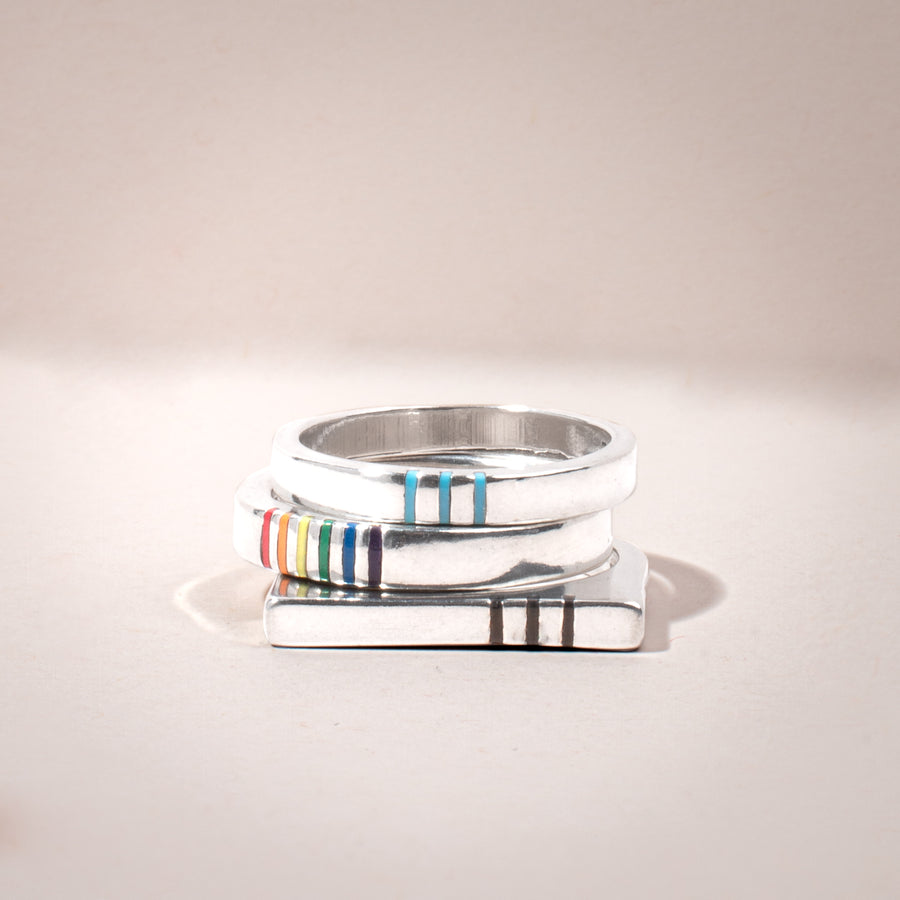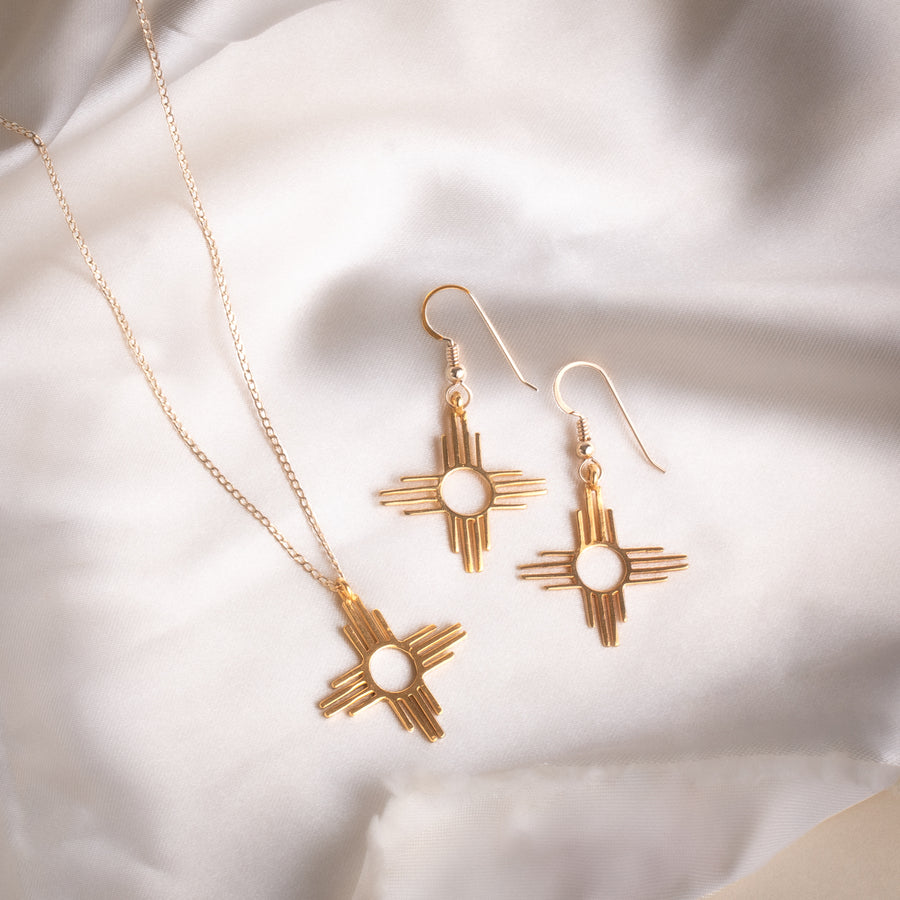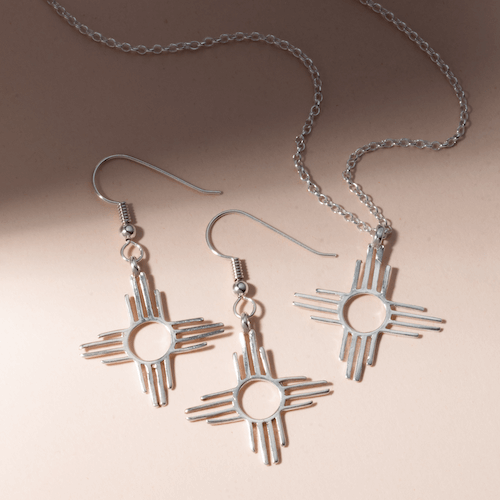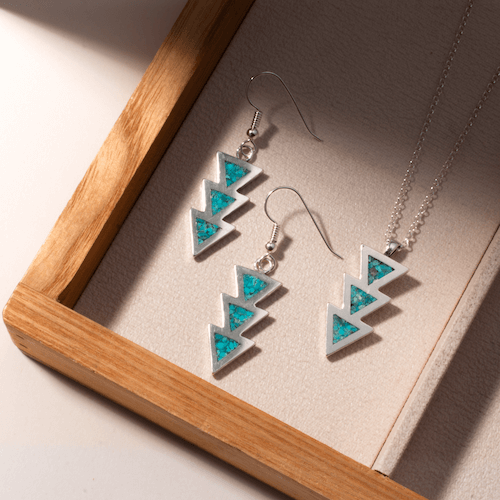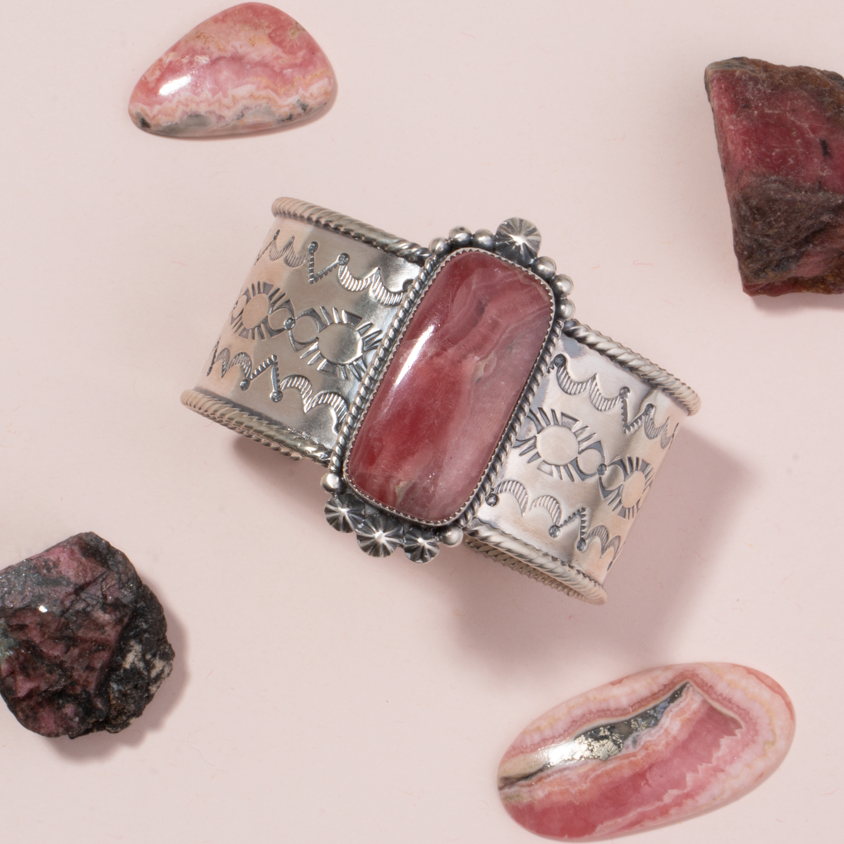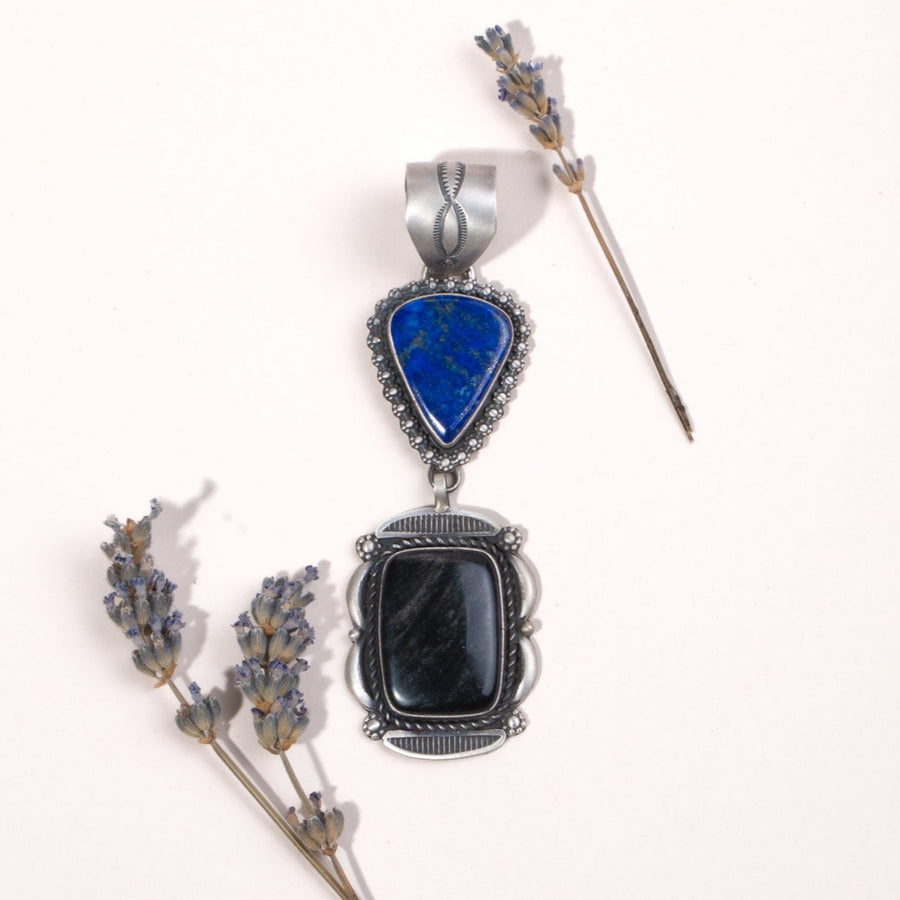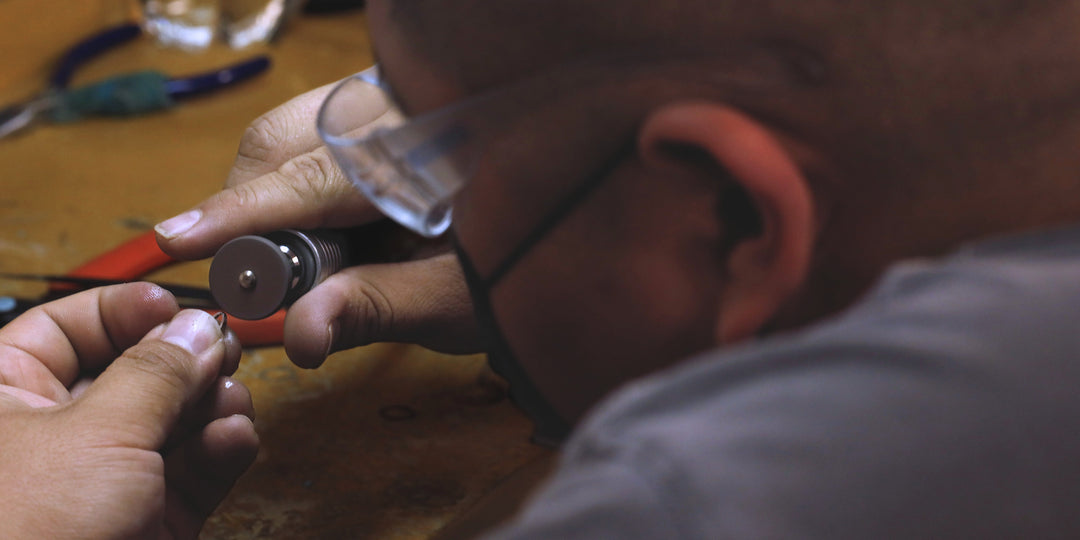The History of Hubbell Beads
The symbiotic relationship between the traders and the Native American artisans in the Southwest was often a complicated one. It was the business influence of the traders that helped boom the market for the jewelry, pottery and blankets the Navajo, Hopi and other tribes produced. They also controlled that market in ways which, viewed through the modern lens, didn’t always appear to support the creation of genuine handmade items from Native artists. One such instance of injecting cheaper, mass produced materials into the work can be found in what have come to be known as Hubbell beads.

Hubbell beads were glass beads imported from Italy, Bohemia and later Czechoslovakia. Though there is not significant evidence the practice was begun by Lorenzo Hubbell, owner of Hubbell Trading Post, the beads have become associated with his name. They were purchased as a less expensive way of producing jewelry. Since the traders often supplied the Native artists with the materials for jewelry sold at the trading posts, the traders looked for ways to lower the costs of producing enough jewelry to meet the market demand. They found one way through the cottage crafters in areas such as Czechoslovakia.
By the turn of the twentieth century, Czech bead makers were exporting large quantities of glass beads to a worldwide market. They came in a wide array of shapes, sizes and colors. Ones imported to the Southwest were shaped and colored to resemble the turquoise and coral used in Native American jewelry. While their use may have been only a substitute for the real gems that make up true handmade jewelry from the Southwest, their import helped families in areas such as Bohemia make a living during the tumultuous times in Europe.

The area known as Bohemia, which would later become part of the newly formed Czechoslovakia, is rich in the natural resources required for making glass. Quartz from local mines and potash, the by-product of wood fires, offered materials for an industry to grow. Bohemian crafters have been making glass beads since the time of the Roman Empire. With the fall of Rome, however, bead making declined as beads were considered a luxury item.
In the 1550s, Bohemia’s glass industry began to boom. Cities such as Jablonec, Stanovoko and Bedrichov were major centers for the making of glass products, including beads. The work was done by cottage crafters working out of their homes, making beads for the local jewelry factories. Homes where beads were produced could be recognized by their tall chimneys and roof vents.
Bead making boomed with the advent of machines which could mass produce a variety of shapes and sizes fast and at low cost. Rather than hand making the beads, these machines used heated molds into which the molten glass was pressed. A rod was used to place the hole in the bead. This allowed the hole to be put anywhere and even multiple holes could be created. Beads could be colored in an array of shades. Cottage crafters were given molds to use to create identical beads for the factories. Bead making remained a family enterprise.
Mary Marie Yazzie “treasure necklace”. This piece, strung about 1970, features natural turquoise, abalone shell, sterling silver charms by Kee Joe Benally (Navajo), garnets, Hubbel beads, heishi shell & New Lander Royal Web Nevada gemstone. This piece was sourced from a private collector who did not wish to be named. If you are interested in this necklace please contact us.
As a result of the Napoleonic Wars, Bohemia became a part of Austria. After settling in to their new country, the bead makers began the process of expanding their business. Traveling salesmen known as “Sample Men” went from place to place, asking the business owners what type of bead they would be interested in purchasing. They gathered descriptions of the desired beads and produced sketches for the bead makers to work off of. The industry boom was so successful that by 1928 the Czechs were the largest exporters of beads in the world.
That success faced some obstacles as unrest in Europe resulted in two world wars. There were also effects on the industry from the Great Depression. Following World War I, Bohemia again changed hands, becoming part of the newly formed Czechoslovakia.
When the communist regime came to power following World War II, they nationalized the glass making industry. Beads once again fell afoul of their image as luxury products. Making them fell into decline during this time. They returned, however, in the late 1950s, when the regime began to look for ways to produce cash. Reviving the export of glass beads was a way for them to make money. So the bead makers were back in business.
Today the crafters in Czechoslovakia are in the forefront of the bead making industry once again. As for what have become known as Hubbell beads, they are prized collectors’ items. And Lorenzo Hubbell’s name has become synonymous with any glass bead which resembles turquoise.
Circa 1910s, Handmade chisel sterling silver beads, Handmade Sterling Silver Naja & blossoms, featuring 58 Hubble glass beads. Dimensions: 30″ length, with a 2 1/4″ x 2 1/2″ Naja. Blossoms measure 1 1/2″ in length. This piece was sourced from a private collector who did not wish to be named. If you are interested in this necklace please contact us.
Resources:
http://blog.indiantraders.com/native-american-jewelry-definitions/#sthash.0JkznS0u.dpbs
http://peachstatearchaeologicalsociety.org/index.php/13-beads/248-history-of-trade-beads
http://www.harlequinbeads.com/history-of-czech-glass-article
http://www.bigbeadlittlebead.com/guides_and_information/history_of_czech_glass_beads.php
http://island-cove.com/history-czech-glass-beads/
